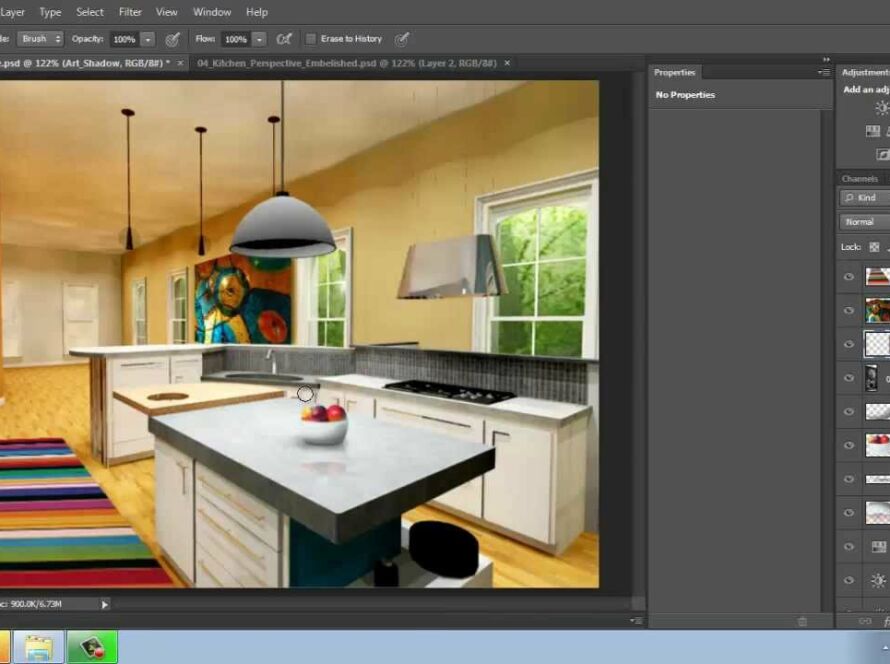There are two main types of design: 2D and 3D. Both have their own advantages and disadvantages, so it’s important to know which one is right for your project. 2D design is typically used for more simplistic designs, such as logos or illustrations. It’s also generally quicker and easier to create than 3D design. However, 2D design can sometimes look flat and lacks the depth and dimension that 3D design can provide. 3D design is more complex and takes longer to create, but it can provide a more realistic and lifelike appearance.
It’s often used for products or characters that need to be seen from multiple angles, such as in video games or movies. So, which one should you use? It really depends on your needs and preferences. If you want something quick and easy, then 2D design is probably your best bet. But if you need something that looks more realistic, then 3D design is the way to go.
What is 2D design?
2D design is a field of graphic design that refers to the creation of two-dimensional images, usually with a computer program. These images can be anything from simple illustrations to complex engineering drawings.
2D design programs are typically vector-based, meaning they use mathematical algorithms to create and manipulate objects on the screen. This gives designers a great deal of control over the final look of their designs.
Most 2D design programs also allow for some degree of raster image editing, which means they can also work with photos and other types of bitmap images. This makes them ideal for creating composite designs that combine different types of elements.
What is 3D design?
3D design is the process of creating a three-dimensional object from a two-dimensional drawing. It can be used to create anything from simple objects to complex structures.
There are many software programs that allow you to create 3D designs, and each has its own strengths and weaknesses. Some programs are better for creating organic shapes, while others excel at creating geometric shapes.
The key to success in 3D design is to find the right program for the task at hand, and to practice using it until you become comfortable with its capabilities.
The benefits of 2D design
When it comes to design, there are two main types: 2D and 3D. While both have their own advantages and disadvantages, 2D design tends to be more versatile and easier to work with overall. Here are some of the benefits of 2D design:
- Greater flexibility – With 2D design, you have more freedom to experiment with different layouts, color schemes, and other elements. This makes it ideal for exploring different ideas and concepts before settling on a final design.
- Easier to learn – For those new to design, 2D can be much easier to learn and understand than 3D. This is because it is less complex and generally requires less software knowledge.
- More affordable – Since 2D design is generally simpler, it also tends to be more affordable than 3D design. This makes it a great option for small businesses or individuals on a budget.
- Faster turnaround time – Since 2D designs are typically quicker and easier to create, they often have a shorter turnaround time from start to finish. This can be a major advantage when time is limited or you need your project completed ASAP.
The benefits of 3D design
When it comes to product design, there are two main types of design: 3D design and 2D design. Both have their own unique set of benefits that can make the design process easier and more efficient. Here are some of the key benefits of 3D design:
- You can get a better sense of the final product. With 3D design, you can see exactly how your product will look when it’s finished. This can be helpful for making sure that all the elements are in proportion and that there are no surprises when you go to manufacture the product.
- You can make changes more easily. With 3D design, it’s easy to make changes to the geometry or even the materials used in your product. This can save a lot of time and money during the prototyping and manufacturing phases.
- You can create realistic prototypes. With 3D printing, you can create prototypes that look and feel just like the final product. This is a great way to test out different designs before committing to manufacturing them.
- You can communicate your ideas more effectively. 3D models are much easier to share than 2D drawings, so it’s easier to get feedback from other people on your team or in your company. This can help improve the overall quality of your product designs
Which one is right for you?
There are two types of d design: d design and d design. Both are great for different purposes. Here’s a quick rundown of each type:
2D design:
- Best for making detailed, high- fidelity designs
- Can be used for both web and print projects
- The most popular type of d design
3D design:
- Best for making quick, low-fidelity designs
- Great for mocking up ideas quickly
- Good for collaboration
Conclusion
There are pros and cons to both 2D and 3D design, and ultimately it comes down to what you need the design for. If you need a design for something that will be printed or displayed on a screen, then 2D is probably your best bet. If you need a design for something that will be used in a three-dimensional space, like architecture or product design, then 3D is probably your best bet. Whichever route you choose, make sure you have the right tools and software for the job.





